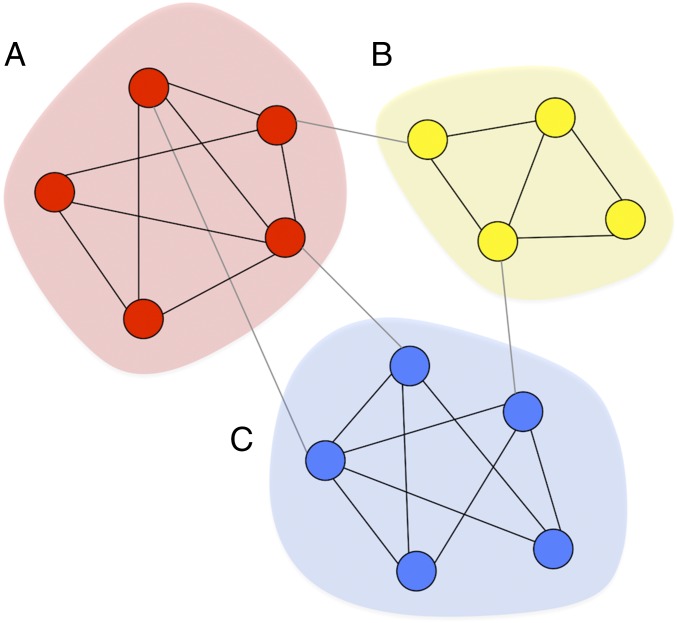Fig. 1.
Homophily, social network structure, and causal mechanisms. A depiction of three network communities (A–C) where nodes represent people and colors represent individual traits. People in the same community are more likely to be similar (same color node) and to adopt the same ideas and behaviors. This is the principle of homophily. There are two potential causal mechanisms at play here: (i) Social selection: similar people are attracted to each other and tend to form social ties (e.g., blue nodes tend to form ties with blue nodes, red nodes tend to form ties with red nodes, etc.). This can lead to the formation of dense communities segregated by ethnicity, race, gender, or other traits, such as those depicted here. (ii) Social influence/contagion: people are often influenced by those in their social network through the diffusion of information and the pressure to conform. This is sometimes referred to as peer effects and it is thought to be stronger among people who are already similar in other ways. For example, someone in community C is more likely to be influenced by others in community C than by those in community A, even if they have exposure to community A. Inevitably, this can cause similar people to become even more similar over time. A critical challenge in most empirical work attempting to make casual network claims is thus disentangling social influence from social selection processes (38): Are people similar because they are socially connected (and therefore subject to social influence), or are similar people simply forming ties with each other in the first place (social selection)?

